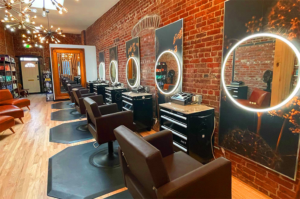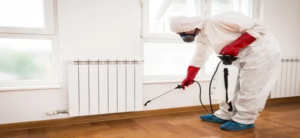Stucco is a protective skin for homes and other buildings, shielding the underlying structure from harsh weather conditions. Addressing these issues promptly is vitally important when it begins to crack and damage.
Start by visually and physically inspecting the stucco for signs of damage. When tapped, look for cracks, holes, discoloration, and a hollow sound. Click the https://www.stuccorepairphilly.com/ to learn more.

Stucco is a durable material, but it can still be subject to cracking and deterioration over time. Environmental pollutants, continuous exposure to UV light, and general wear and tear can degrade stucco, causing it to lose its structural integrity. As a result, stucco can develop cracks and holes that require professional repair. These damage repairs are usually minor, but they should be completed quickly to prevent further deterioration.
When assessing stucco damage, you should pay close attention to the color and texture of the affected areas. Cracks, in particular, can often be hard to distinguish from the surrounding stucco. A skilled and experienced professional can use a variety of techniques to create an indistinguishable patch that blends seamlessly with the rest of the surface.
Before beginning any stucco repair, it is essential to clean the damaged area thoroughly. Using a wire brush, you should scrub away any dirt or dust that has collected on the surface of the stucco. A clean surface is crucial to ensuring the new stucco will adhere properly to the existing structure.
During the cleaning process, you should also look for signs of mold or mildew growth. These can be a sign of an insufficient moisture barrier, which can lead to other problems such as rot and insect infestations. If the damage is extensive, you will need to remove and replace the damaged areas of the stucco.
Once the area has been cleaned, you can begin repairing the cracked areas of your stucco. To start, you should clear out the cracks by scraping away any loose or crumbling stucco. Using a cold chisel, you should then square off the damaged areas to make sure your repair will be as seamless as possible.
The next step is to prepare the area for new stucco by applying a bonding agent to the damaged surface. You should then mix your stucco patch following the manufacturer’s instructions. When the mix is ready, you can apply it to the repaired area. Once the patch has been applied, you should smooth and texture it to match the surrounding area.
Stains
When a stucco wall develops stains that aren’t caused by impact or structural damage, the best approach is usually to remove them and then re-clean the entire surface. Stains can be caused by anything from a simple dirt stain to a more serious issue like mold and mildew. In the latter case, this is more than just a cosmetic concern, since mildew and mold are not only unsightly but can also create health hazards for your family.
In order to get rid of mold and mildew, it’s necessary to kill the growth and clean out any residue. The best way to do this is with a solution of one part bleach and four parts water, with good ventilation if working in a closed space. This is typically enough to kill the problem, but if you’re dealing with stubborn stains that don’t respond to scrubbing, it may be necessary to use an acidic cleaner such as muriatic acid.
Once the mildew and mold have been eliminated, a thorough cleaning using a soft-bristle brush can help restore the integrity of the stucco. If you need to scrub the wall with a power washer, be sure to follow the manufacturer’s recommendations and don’t apply too much pressure. If the stains are particularly deep, it’s sometimes necessary to chisel to reach solid, undamaged stucco or the lath (the mesh framework that supports the stucco).
While you’re cleaning the surface of the stucco, don’t forget to inspect it for signs of damage. Any cracks should be noted, including their size and location. Cracks should be fixed with a high-quality exterior caulk that matches the shade of your stucco. It’s also important to consider adding a waterproofing coating to the stucco, especially in areas that are prone to moisture.
Stucco repair requires care and precision in order to ensure the patch blends seamlessly with the surrounding wall. Trying to cut corners or rush the process will likely result in failure, which will require additional repairs and can lead to even more damage in the future. Be patient and follow the steps above, and you will be rewarded with a stucco surface that will last for years to come.
Impact Damage
Stucco is a durable material, but it can still be damaged. Damage to stucco may occur for a number of reasons, including improper installation, water infiltration, and aging. The first step in preventing damage to stucco is identifying the source. For example, cracks in the stucco can indicate structural issues that require professional attention. In many cases, these issues can be corrected by resealing cracks and using an effective waterproofing agent.
Discoloration is another common sign of stucco damage. This often indicates moisture problems, which can lead to mold and other serious issues. In some cases, it can even cause the underlying structure to rot. To prevent discoloration, regular maintenance and a thorough cleaning routine can help.
Damage to stucco caused by impact can also be a serious issue that requires professional repair. Whether it is caused by lawn equipment or falling debris, this type of damage can weaken the integrity of the stucco and compromise the stability of your home. To minimize impact damage, homeowners should regularly check their exterior for damage and make sure trees and shrubs are properly trimmed to avoid contact with the stucco.
The final factor in preventing stucco damage is recognizing and responding to the signs of damage as soon as possible. By doing so, you can avoid costly repairs and keep your home’s exterior looking beautiful for years to come.
Stucco is a popular choice for homes and commercial buildings because of its durability and aesthetic appeal. But it can be prone to damage over time due to cracks, stains, and water infiltration. Luckily, these issues can be easily repaired with the help of a stucco repair company. In order to ensure a long-lasting finish, it is important to monitor the condition of your stucco and take steps to protect it from damage. In addition to a thorough inspection, it is helpful to have a maintenance plan in place that includes regular cleaning and painting to promote longevity. In addition, it is important to follow proper construction and curing practices to ensure the integrity of your stucco.
Water Damage
Stucco is a resilient material that can withstand a variety of weather conditions, but it is not immune to water damage. If moisture intrusion is not addressed promptly, it can lead to a wide range of issues including rot, mold, and structural damage.
Oftentimes, the first signs of moisture damage in stucco are cracks or discoloration. These symptoms can be the result of a number of factors, such as physical damage, or they may indicate underlying issues like inefficient drainage. Cracks that appear around windows are especially flagrant as they can allow water to enter the building and cause significant damage.
Moisture damage in stucco can also manifest as stains or mold and mildew growth. These are serious concerns that should not be ignored, as they can pose health and safety risks to the building occupants. Additionally, mold and mildew can be a sign of more serious issues like rot or structural damage.
If you see any of these signs, it is important to contact a professional for a thorough inspection and diagnosis. This will help determine the severity of the damage and address any underlying issues.
Once the underlying issues have been addressed, it is time to start the repair process. The first step is to remove any loose or crumbling areas of the stucco with a hammer or cold chisel. Next, clean the area thoroughly to ensure that the new stucco will adhere. After cleaning the area, it is important to cover the exposed wood lath with grade-D builder’s paper to prevent moisture infiltration. This is an important step, as it will protect the sheathing and insulation from future problems.
Once the sheathing and insulation have been repaired, the next step is to apply a fresh coat of stucco. This is an important step, as it helps to restore the appearance of the building and improve its energy efficiency. Finally, the final steps involve a thorough inspection and quality control to ensure that the stucco repair was completed properly. Contacting a professional for your stucco repair will ensure that your home or business is safe and secure.








